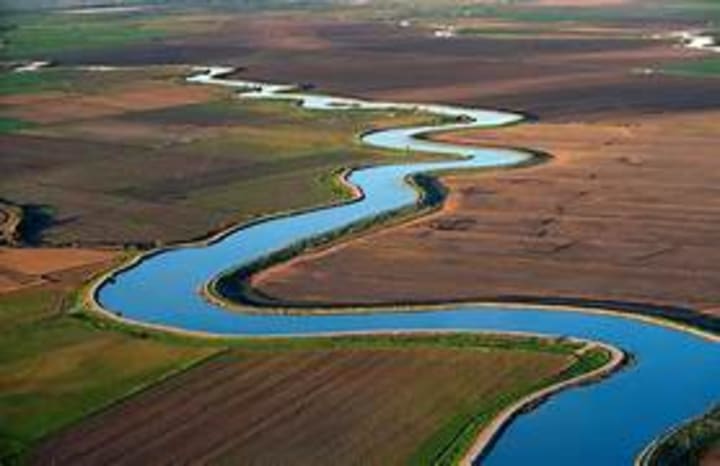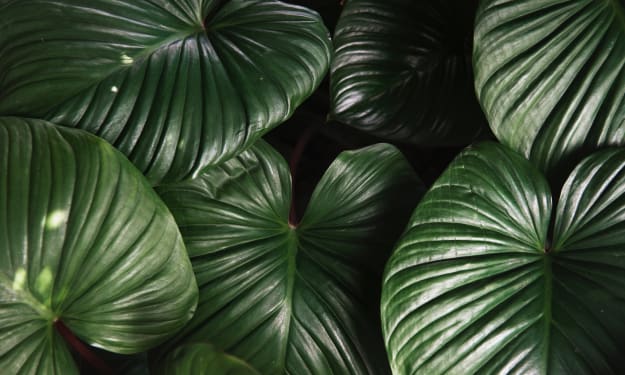Nature's Masterpiece: Understanding the Exceptional Biodiversity in the Middle Sections of Rivers and its Relation to Climate Change
French

Introduction to biodiversity in rivers
Rivers are not only sources of life-giving water, but they are also home to a stunning array of biodiversity. From tiny algae to majestic fish, rivers support a diverse and interconnected ecosystem that is crucial for the health of our planet. Among the different sections of rivers, the middle sections are known to have the greatest biodiversity. In this article, we will explore the factors influencing biodiversity in rivers, with a specific focus on the middle sections, and understand the role of climate change in shaping this extraordinary natural phenomenon.
Factors influencing biodiversity in rivers - current and oxygen content
The biodiversity of rivers is influenced by several key factors, including the speed of the current and the oxygen content of the water. The current in rivers plays a vital role in shaping the physical environment and creating diverse habitats. Fast-flowing sections of rivers, such as rapids and cascades, provide oxygen-rich environments that support a wide range of aquatic species. These sections are often characterized by turbulent waters, which create niches for different species to thrive. On the other hand, slow-flowing sections, such as pools and meanders, offer sheltered areas that foster the growth of vegetation and provide habitats for various organisms.
Oxygen content is another critical factor that determines the biodiversity of rivers. Oxygen is essential for the survival of aquatic organisms, and different species have varying oxygen requirements. High oxygen levels support the presence of diverse species, including those that are sensitive to low oxygen levels. Factors such as water temperature, the presence of submerged aquatic plants, and the rate of oxygen production through photosynthesis all influence the oxygen content of rivers. Therefore, maintaining optimal oxygen levels is crucial for supporting a rich biodiversity in rivers.
The role of climate change in river biodiversity
Climate change is a global phenomenon that is affecting ecosystems across the planet, including rivers. Changes in temperature, precipitation patterns, and water availability are altering the physical and chemical characteristics of rivers, which, in turn, impact their biodiversity. As the climate warms, rivers are experiencing shifts in water flow, temperature regimes, and seasonal patterns. These changes directly affect the habitats and life cycles of aquatic species, leading to shifts in their distribution and abundance.
One of the significant impacts of climate change on river biodiversity is the alteration of stream flow patterns. Changes in precipitation patterns can result in increased frequency and intensity of floods or droughts, which can disrupt the natural flow regime of rivers. This disruption can have profound effects on the composition and abundance of aquatic species. Some species may struggle to adapt to the new flow conditions, while others may benefit from the changes. Consequently, the middle sections of rivers, which often act as transition zones between different flow regimes, become hotspots of biodiversity due to their ability to support a wide range of species with varying ecological needs.
Understanding the middle sections of rivers and their biodiversity
The middle sections of rivers, also known as transition zones, are unique ecosystems that connect the upstream and downstream portions. These sections are characterized by a combination of different flow patterns, which create a heterogeneous environment that supports a high diversity of species. The transition zones often contain a mix of fast and slow-flowing areas, providing a variety of habitats for aquatic organisms. Additionally, the presence of different substrates, such as rocks, sand, and gravel, further enhances the habitat complexity and promotes biodiversity.
The middle sections of rivers are also important for the movement and migration of species. Many aquatic organisms, including fish and invertebrates, rely on these sections to complete their life cycles. For instance, some fish species use the middle sections of rivers as spawning grounds, where they lay their eggs and ensure the survival of future generations. The transitional nature of these sections allows for the exchange of genetic material and the dispersal of species, contributing to the overall biodiversity of rivers.

Factors contributing to high biodiversity in the middle sections of rivers
Several factors contribute to the exceptional biodiversity observed in the middle sections of rivers. As mentioned earlier, the presence of diverse flow patterns and habitats in these sections creates a mosaic of environments that can support a wide range of species. Additionally, the transition zones act as ecological corridors, facilitating the movement and dispersal of organisms between different sections of the river. This connectivity allows for gene flow and promotes the exchange of individuals, which is vital for maintaining healthy and resilient populations.
Furthermore, the middle sections of rivers often receive inputs of organic matter from upstream and downstream sources. These inputs serve as a source of food and nutrients for aquatic organisms, supporting their growth and reproduction. The availability of abundant food resources contributes to the high productivity and biodiversity observed in these sections. Additionally, the diverse substrates present in the transition zones provide attachment surfaces for algae, invertebrates, and other species, further enhancing the overall biodiversity.
The relationship between current and oxygen content and river biodiversity
The relationship between the current and oxygen content of rivers and their biodiversity is intricate and interconnected. The speed of the current influences the oxygen content by promoting the mixing and aeration of water. Fast-flowing sections create turbulent conditions that increase oxygen availability, supporting the presence of oxygen-demanding species. These sections also provide habitats for species adapted to high flow velocities, such as certain fish species that rely on strong currents for feeding or spawning.
Conversely, slow-flowing sections of rivers, characterized by calm waters, can experience lower oxygen levels due to reduced mixing. However, the presence of submerged aquatic plants in these sections can contribute to oxygen production through photosynthesis, counteracting the potential oxygen depletion. These sections often support a different set of species, including those adapted to low oxygen environments. Therefore, the combination of current speed and oxygen content creates a dynamic environment that fosters a diverse range of species with varying physiological adaptations.
Case studies showcasing exceptional biodiversity in the middle sections of rivers
Several case studies highlight the exceptional biodiversity found in the middle sections of rivers around the world. One such example is the Amazon River, which is renowned for its rich and diverse ecosystem. The middle sections of the Amazon River, characterized by slow-flowing waters and intricate networks of channels, support an incredible array of species, including freshwater dolphins, giant otters, and an abundance of fish species. The unique combination of habitat complexity, nutrient availability, and connectivity between different sections of the river contributes to the exceptional biodiversity observed in this region.
Another remarkable case study is the Mekong River in Southeast Asia. The middle sections of the Mekong River encompass a vast floodplain that undergoes seasonal inundation, creating a dynamic environment that supports an incredible diversity of species. During the flood season, the river overflows its banks, creating temporary habitats known as floodplains. These floodplains provide abundant food resources and shelter for various organisms, including migratory fish, water birds, and reptiles. The seasonal flooding and the resulting habitat heterogeneity contribute to the outstanding biodiversity observed in the middle sections of the Mekong River.
Strategies for preserving and protecting river biodiversity
Given the importance of river biodiversity, it is crucial to implement strategies for preserving and protecting these valuable ecosystems. One approach is the establishment of protected areas and conservation zones along rivers. These areas can provide refuge for sensitive species and help maintain the connectivity between different sections of the river. Additionally, implementing sustainable fishing practices and regulating water extraction can help prevent overexploitation and preserve the delicate balance of river ecosystems.
Furthermore, promoting public awareness and education about the value of river biodiversity is essential for garnering support and fostering a sense of stewardship. Engaging local communities in conservation efforts and encouraging sustainable practices, such as river cleanup initiatives and habitat restoration projects, can contribute to the long-term preservation of river biodiversity. Collaborative research and monitoring programs can also provide valuable insights into the status of river ecosystems and inform conservation strategies.
The importance of research and monitoring in understanding river biodiversity
To truly understand river biodiversity and its relationship with climate change, continuous research and monitoring efforts are crucial. By studying the ecological processes and dynamics of river ecosystems, scientists can gain insights into the complex interactions between different environmental factors and biodiversity patterns. Long-term monitoring programs allow for the detection of trends and changes in river ecosystems, providing valuable data for conservation planning and management.
Advanced technologies, such as remote sensing and DNA metabarcoding, are revolutionizing our ability to study river biodiversity on a large scale. Remote sensing techniques enable the assessment of river habitats and the detection of changes in vegetation cover and land use patterns. DNA metabarcoding allows for the rapid identification of species from environmental DNA samples, providing a comprehensive view of biodiversity in rivers. These innovative approaches, coupled with traditional field surveys and ecological modeling, can enhance our understanding of river biodiversity and its response to climate change.
Conclusion: Appreciating the exceptional biodiversity in the middle sections of rivers
The middle sections of rivers truly represent nature's masterpiece, showcasing exceptional biodiversity and serving as critical habitats for countless species. The combination of diverse flow patterns, habitat complexity, and connectivity between different sections of the river creates a unique environment that supports a wide range of organisms. However, the impacts of climate change pose significant threats to river biodiversity, highlighting the urgent need for conservation and management efforts.
By understanding the factors influencing river biodiversity, such as current speed and oxygen content, we can develop effective strategies for preserving and protecting these invaluable ecosystems. Research and monitoring play a vital role in unraveling the intricate relationships between different environmental factors and biodiversity patterns. Through collaborative efforts and a shared commitment to conservation, we can ensure that the middle sections of rivers continue to flourish as havens of biodiversity for generations to come.
About the Creator
David Binford
Writing has always been a fun opportunity for me to explore new concepts, thoughts, and dreams that come to mind.
I enjoy writing on the state of the world today, human advancement, science, business, health, travel, technology and more.
Enjoyed the story? Support the Creator.
Subscribe for free to receive all their stories in your feed. You could also pledge your support or give them a one-off tip, letting them know you appreciate their work.






Comments
There are no comments for this story
Be the first to respond and start the conversation.